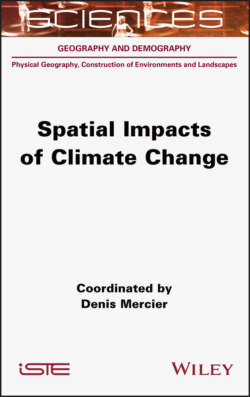Читать книгу Spatial Impacts of Climate Change - Denis Mercier - Страница 15
1.4. Future Arctic-wide climate change
ОглавлениеThe polar projections in Figures 1.10 and 1.11 provide a better understanding of the magnitude of the projected warming in the Arctic Basin by 2050 and 2100 for summer (June to August) and winter (December to February), regardless of the scenario selected, RCP4.5 or RCP8.5. For the summer months, the continental regions surrounding the Arctic Basin would warm up the most.
On the other hand, the magnitude of warming would be exacerbated over the marine areas of the Arctic Basin during the winter months. Indeed, as the melting of the summer ice pack increased in summer during the 21st Century, the thermal inertia of the oceans, which accumulate more heat in summer through solar radiation, also makes it possible to halt the spatial expansion of sea ice in the winter period, even though winter temperatures continue to be favorable to its formation.
This amplifying role of the oceans shows what is at stake in the interactions between the atmosphere and the hydrosphere, with or without the central role of the sea ice filter.
For example, the average winter temperature in the Longyearbyen region of Svalbard at the end of the 21st Century is expected to be about 10°C higher than the current climate (F0rland et al. 2012).
Figure 1.10. Projected changes in summer surface temperatures (June to August) compared to the 1986-2005 average under scenario 4.5 and 8.5, for the years 2050 and 2080
(source: AMAP 2017). For a color version of this figure, see www.iste.co.uk/mercier/climate.zip
Figure 1.11. Projected changes in winter (December to February) surface temperatures relative to the 1986-2005 average under scenarios 4.5 and 8.5, for the years 2050 and 2080
(source: AMAP 2017). For a color version of this figure, see www.iste.co.uk/mercier/climate.zip
